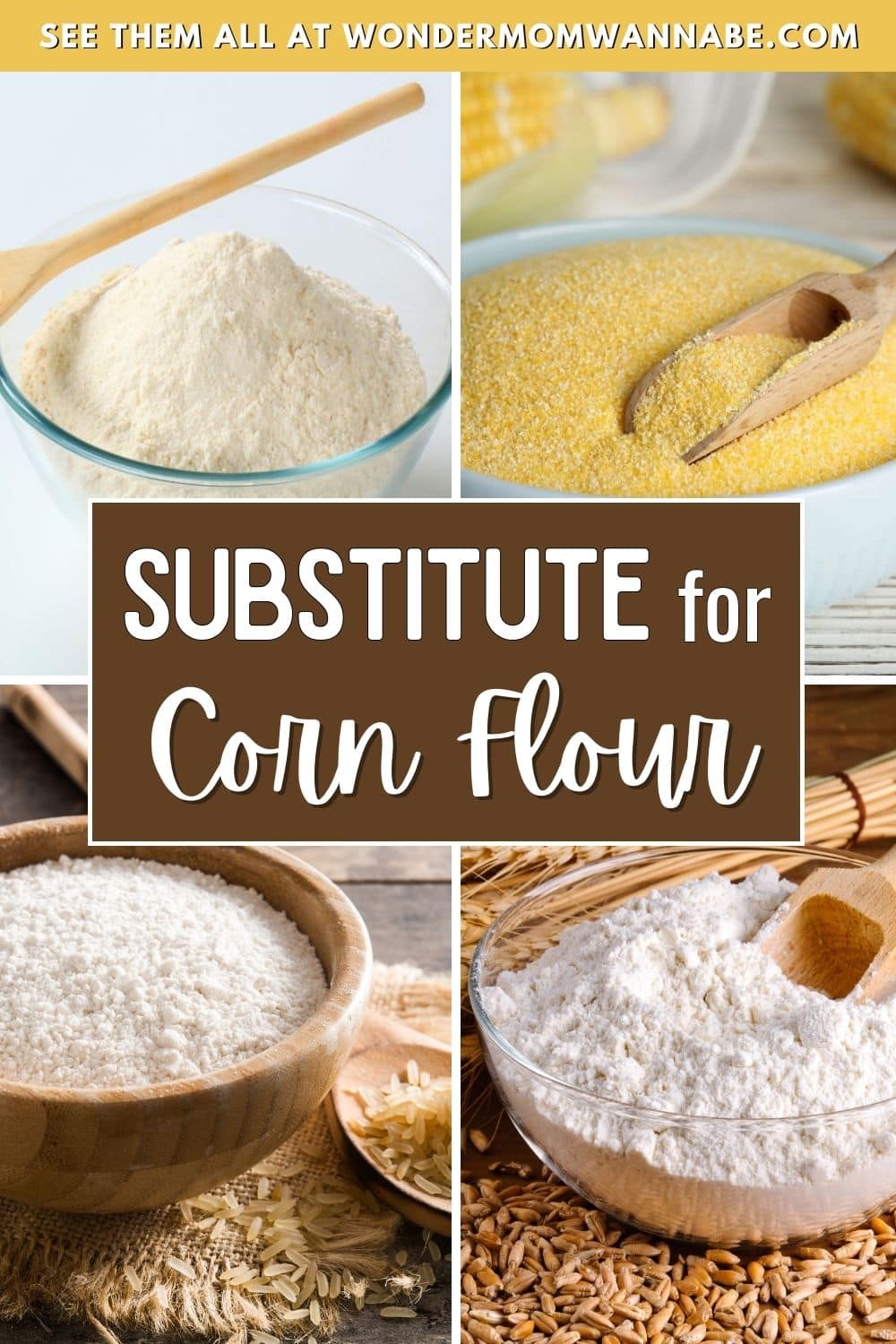Use a corn flour substitute when you suddenly find yourself without this pantry staple.
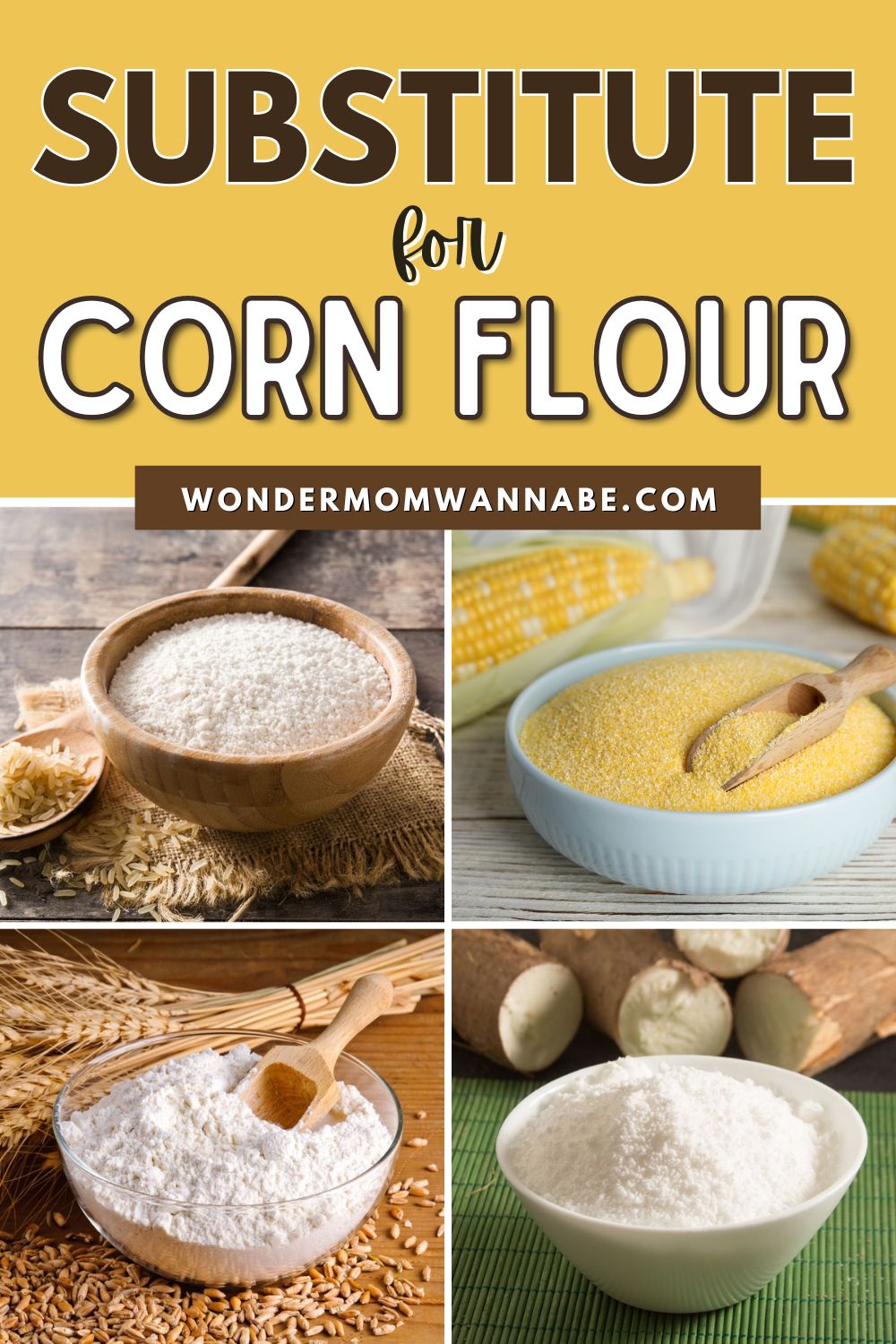
When you’re in the mood to make a delicious recipe, having all the ingredients is a key part of the process. But if you’re missing corn flour from your list, there’s no need to panic or abandon the attempt to create a dish.
Thankfully, there are several alternatives to corn flour that you can use in the meantime to save the day. Just get one of these corn flour substitutes and get on with the cooking.
You or your guests might not even notice any difference.
Jump to:
Is Corn Flour and Cornstarch the Same?
While both are made from corn, they are not the same thing. There are differences between cornstarch and corn flour in terms of flavor and uses in the kitchen.
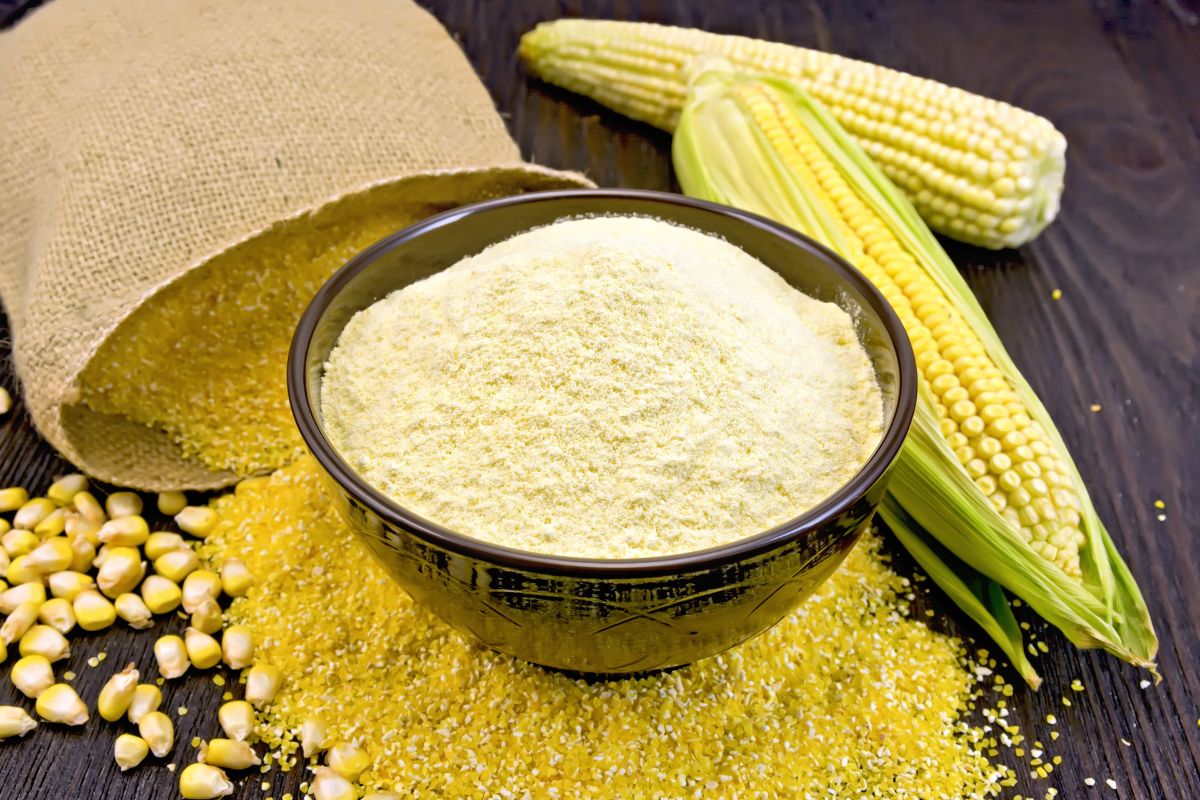
Corn flour, sometimes called maize flour, is made from grinding dried corn kernels. This gives it its yellow color, grainier appearance and signature corn flavor that tastes both sweet and earthy.
It’s also naturally gluten-free, making it popular for making gluten-free, wheatless baked goods.
Meanwhile, cornstarch is made from the starchy parts of corn. It comes in a white powder form that offers no flavor to foods when added.
Both can be used as a thickening agent for dishes like soups, sauces and gravies, however.
What Do You Use Corn Flour For?
There are many corn flour recipes out there. You can use it for:
- Making baked goods like cakes, bread, biscuits and muffins
- Breading for vegetables or fish
- Making sauces
- Making dishes like pasta and curry
Why Will You Need a Cornflour Substitute?
As a cook, one of the most valuable skills you will need to learn is knowing which ingredients work best as a last-minute swap with something else. It’s no different with corn flour.
Here are some reasons why you might need to know about corn flour substitutes:
Availability
Since it has so many uses in the kitchen, you might just find yourself out of cornflour without noticing it. When this happens, knowing that you can rely on using alternatives for cornflour to save your cooking can be comforting.
Food Allergies
It might be a bit uncommon, but certain people can be allergic to corn. And since corn flour is made directly from it, then those allergic to corn are likely to develop adverse reactions when they eat food made with this type of flour, too.
The reactions can range from mild to severe. To be safe, if your family member or guest has a corn allergy, it will be best to use a corn flour alternative instead.
9 Best Substitutes for Corn Flour
Here are the eight best cornflour alternatives that you can use for your recipes.
Cornstarch
They may not be the same, but cornstarch is a widely available and excellent substitute for corn flour. Most homes will surely have it in their pantry.
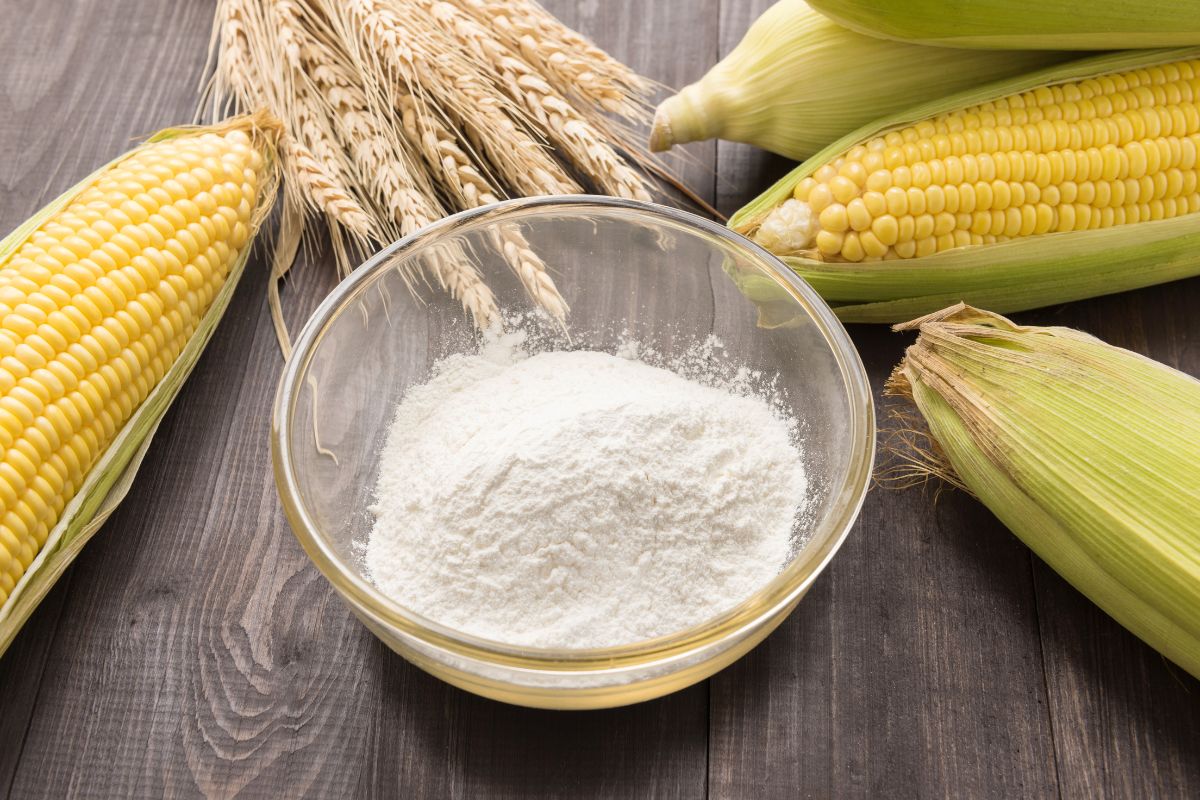
When using corn flour to thicken sauces or as part of the breading, reach for cornstarch as its substitute. It will offer the same texture but without the corn flavor.
If a recipe calls for cornflour in breading and you want to substitute cornstarch, you can generally use them at a 1:1 ratio.
To thicken sauces, you can also use a 1:1 ratio but remember to dilute the cornstarch in cold water first before adding it to the sauce. And when you add it in, make sure to continually stir or whisk the cornstarch mixture in the sauce.
Note that a cornstarch mixture can only thicken a sauce if the sauce is heated to at least 203 F.
Rice Flour
Rice flour is made from finely ground rice and is gluten-free, like corn flour. This makes it a good choice for folks avoiding high-gluten dishes.
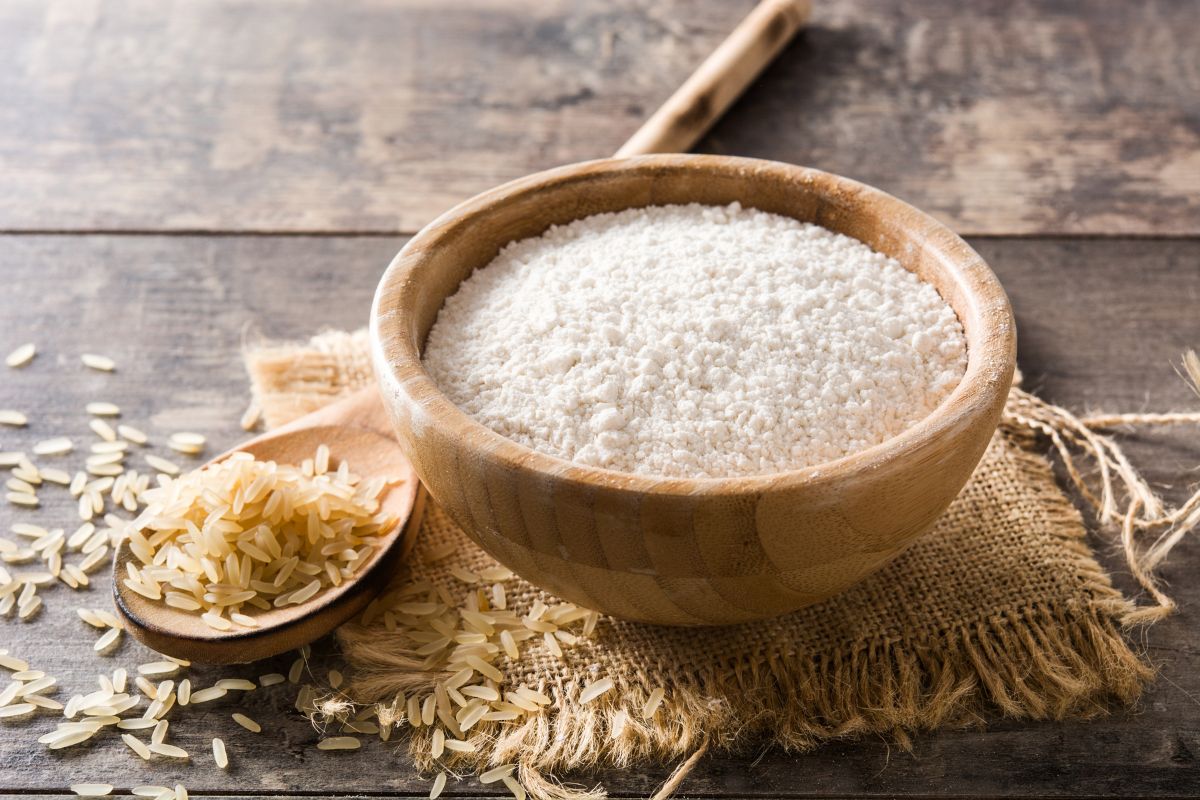
It’s good to use as a thickener in place of corn flour and can even be used in clear broths, as it will not cause any color changes. Unlike cornstarch, rice flour won’t be an ideal alternative if you’re using it for breading or deep frying dishes. It won’t offer the same crunch.
If used as a substitute for making soups or bread, use a 2:1 ratio. So if the recipe needs one tablespoon of cornflour, use two tablespoons of rice flour instead.
All-Purpose Flour
Just like cornstarch, most homes will find themselves with all-purpose flour in their pantry especially, if they’re fond of baking. Thankfully, it can be considered a corn flour substitute.
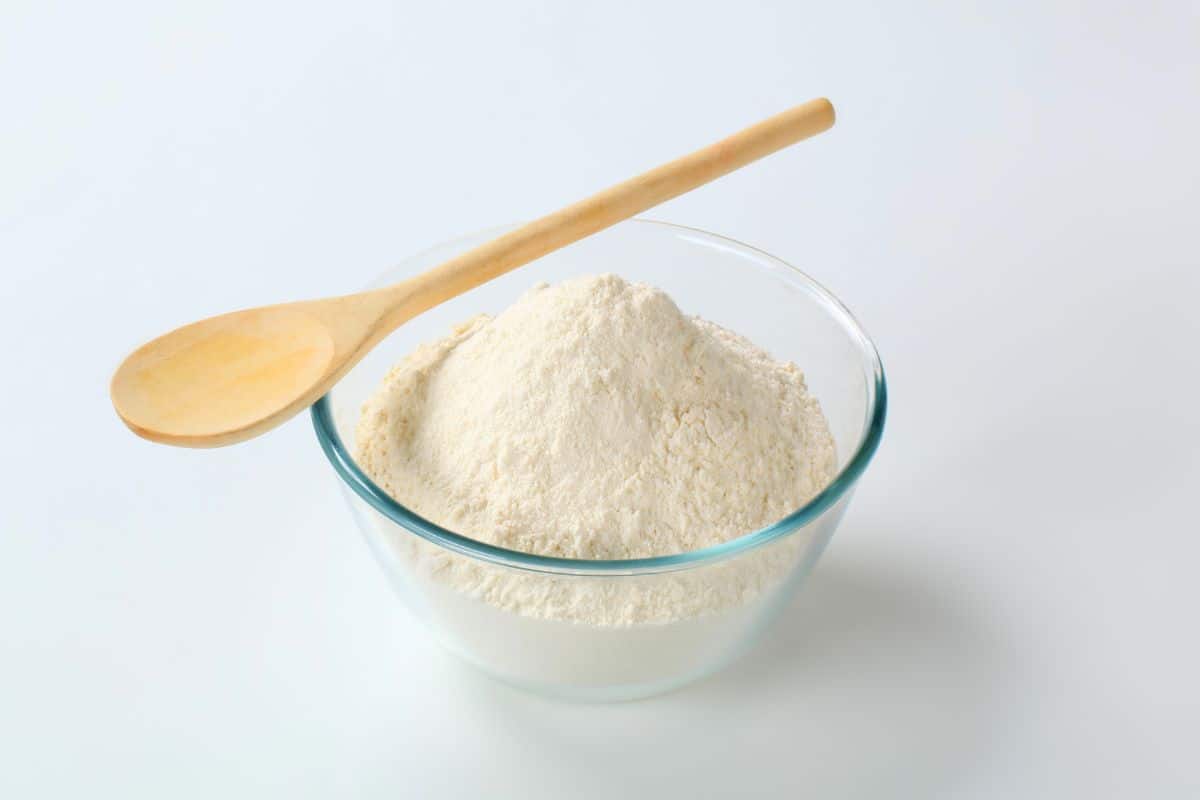
Bear in mind, however, that all-purpose flour is not gluten-free. But if that’s not an issue, apply a 2:1 ratio when using all-purpose flour as a thickener in soups. If the dish calls for one tablespoon of corn flour, use two tablespoons of all-purpose flour.
All-purpose flour can also be used for deep-frying dishes but expect the breading to be thicker. You can use a 1:1 ratio for this purpose.
Masa Harina
Made from organic corn, masa can make a great substitute for corn flour, especially in Mexican or Latin dishes.
With its strong corn flavor, it will work beautifully when making cornbread or tortillas. It can also work as a thickener for stews and soups, but remember to mix masa with water first to keep it from lumping.
You may want to start by using a 1:1 ratio of masa harina for corn flour and then add a bit more if needed.
Wheat Flour
Made from finely grounded wheat, wheat flour is one of the best cornflour substitutes in case you’re out. It’s not gluten-free, however, so keep that in mind.
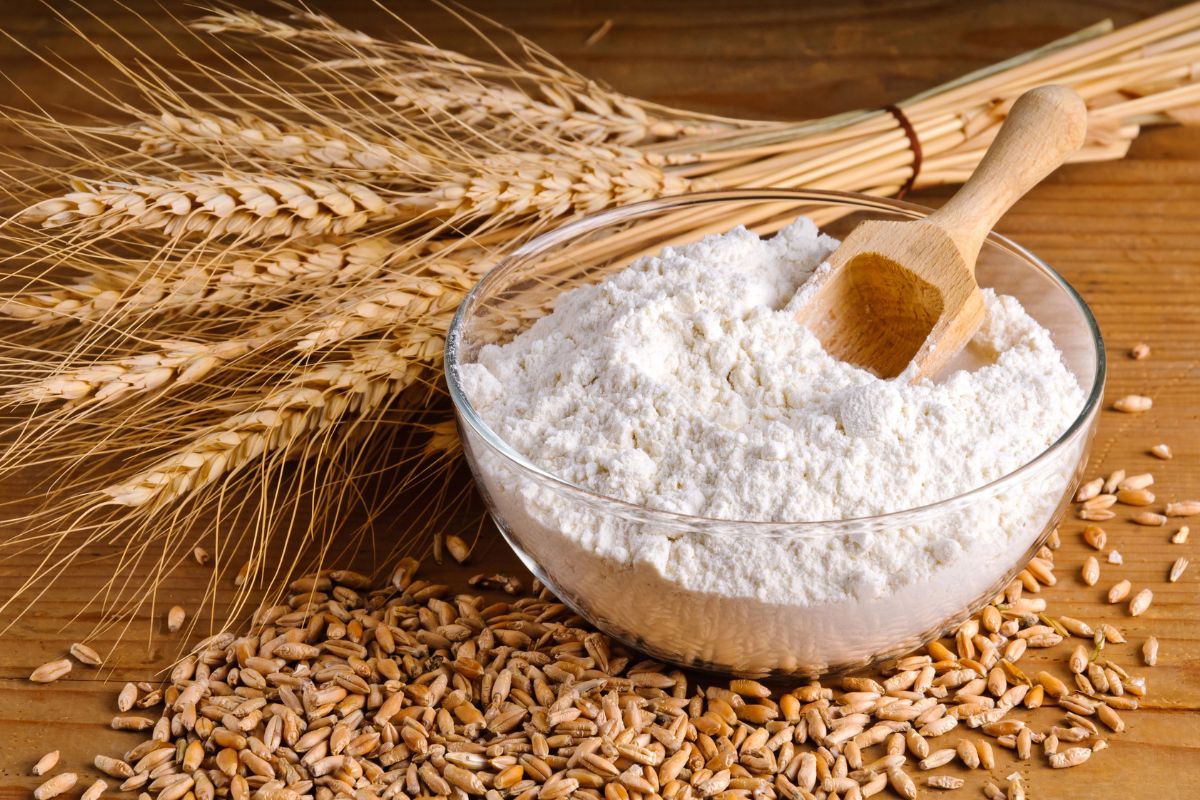
Wheat flour can be used for thickening stews and soups and for making tortillas, too. If used in baked goods, they might have a slightly heavier texture. It also has a bit of a malty flavor that may change the taste of your dishes.
Start with a 1:1 ratio if using wheat flour in place of corn flour in dishes.
Do note that whole wheat flour isn’t a good swap for fried foods.
Tapioca Flour
If you’re looking for a gluten-free replacement for corn flour, add tapioca flour to the list. This one is made from cassava roots.
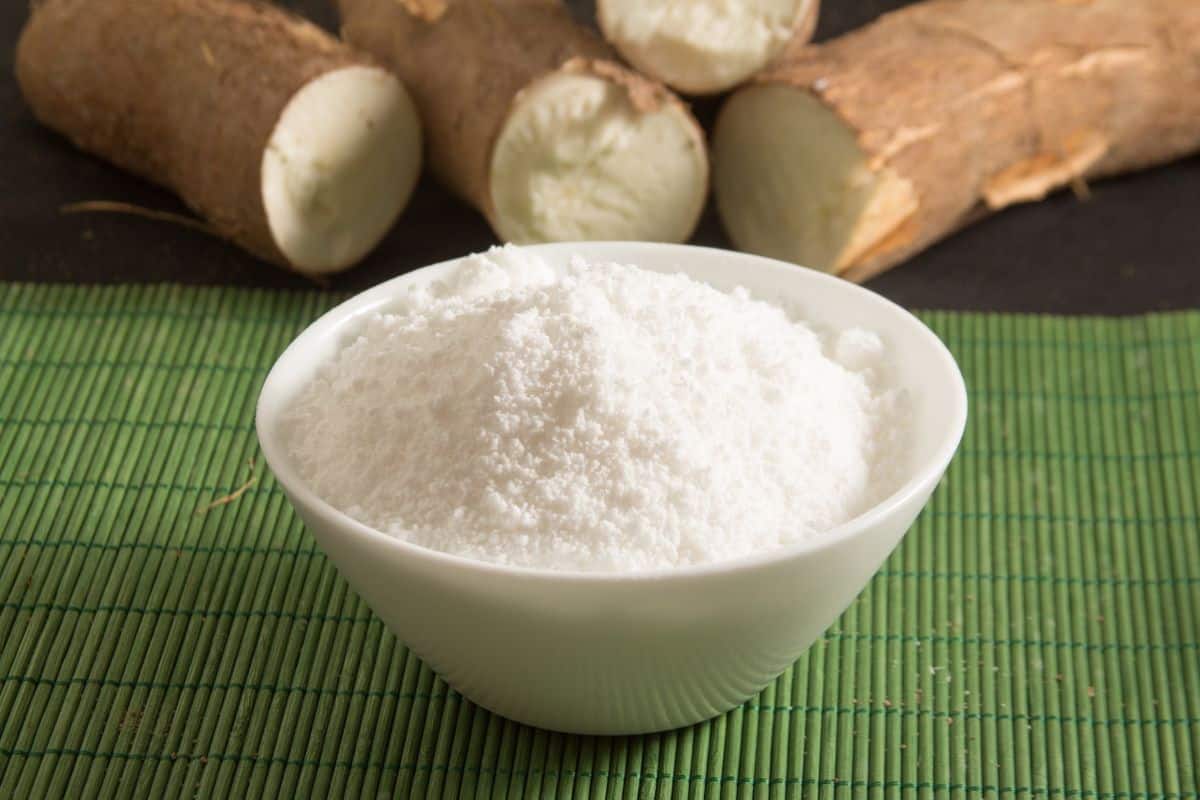
It’s best used as a thickener for sweet and savory dishes in need of corn flour. But while it can be also used for baking, tapioca flour may lend a certain chewiness to baked goods that might not be appealing to some.
Use an equal amount of tapioca flour to replace corn flour, and you’re all set.
Self-Rising Flour
Made from a combination of all-purpose flour, salt, and baking powder, self-rising flour is a good alternative to corn flour if you have it in stock.
If used for baking purposes, you may want to reduce the amount of baking powder and salt in the recipe, considering they’re already part of the self-rising flour. Use a 1:1 ratio.
For coating fried food, you may also use a 1:1 ratio of self-rising flour in place of corn flour.
Use a 2:1 ratio or twice the amount of self-rising flour for corn flour for thickening soups.
Potato Flour
Potato flour works as a gluten-free alternative to corn flour. However, it’s made from dehydrated potatoes and may contain high amounts of fats and carbohydrates.
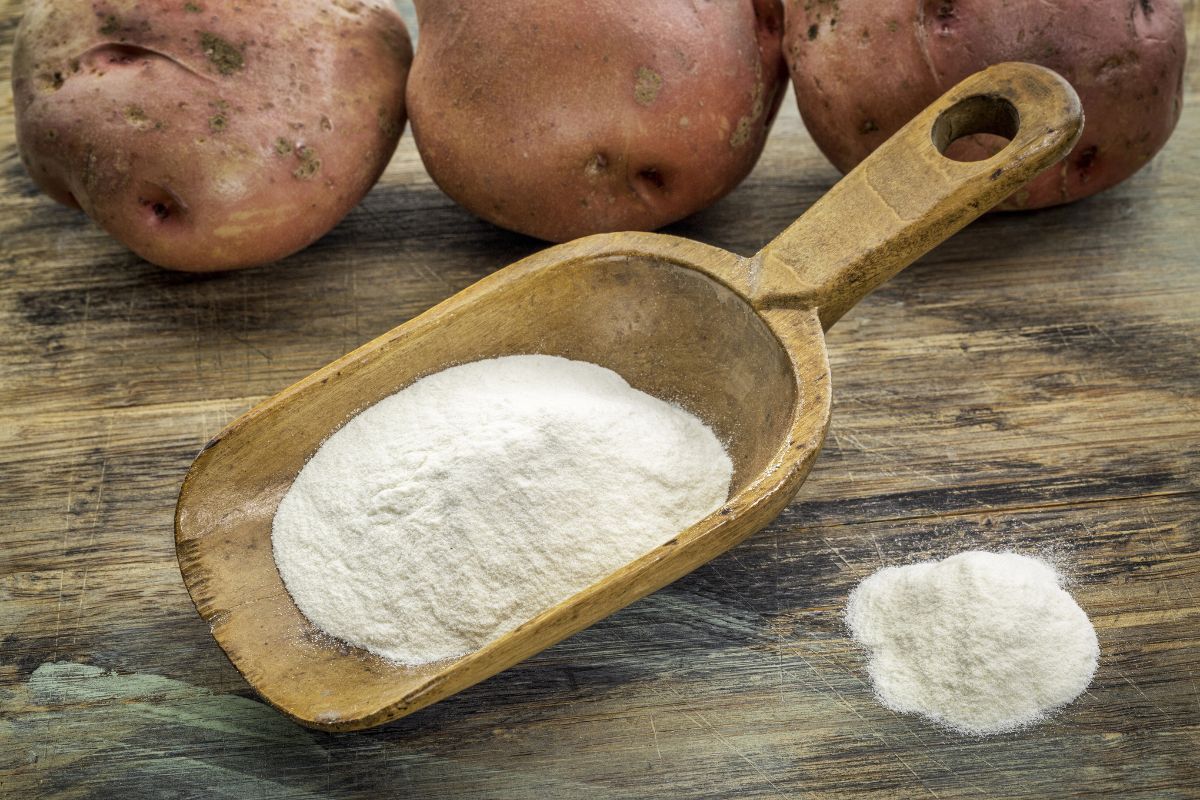
Use a 1:1 ratio if using potato flour instead of corn flour for thickening sauces or soups. Bear in mind that, compared to corn flour, potato flour tends to absorb more liquid, so you may need to adjust the recipe a bit to accommodate it.
It’s also suitable for deep-frying dishes. Just use the same amount of potato flour as you would corn flour.
Cornmeal
Corn meal is another substitute for cornflour. When it comes to corn flour and cornmeal, they can be used interchangeably — in that they offer a similar flavor, but there is an obvious difference in texture.
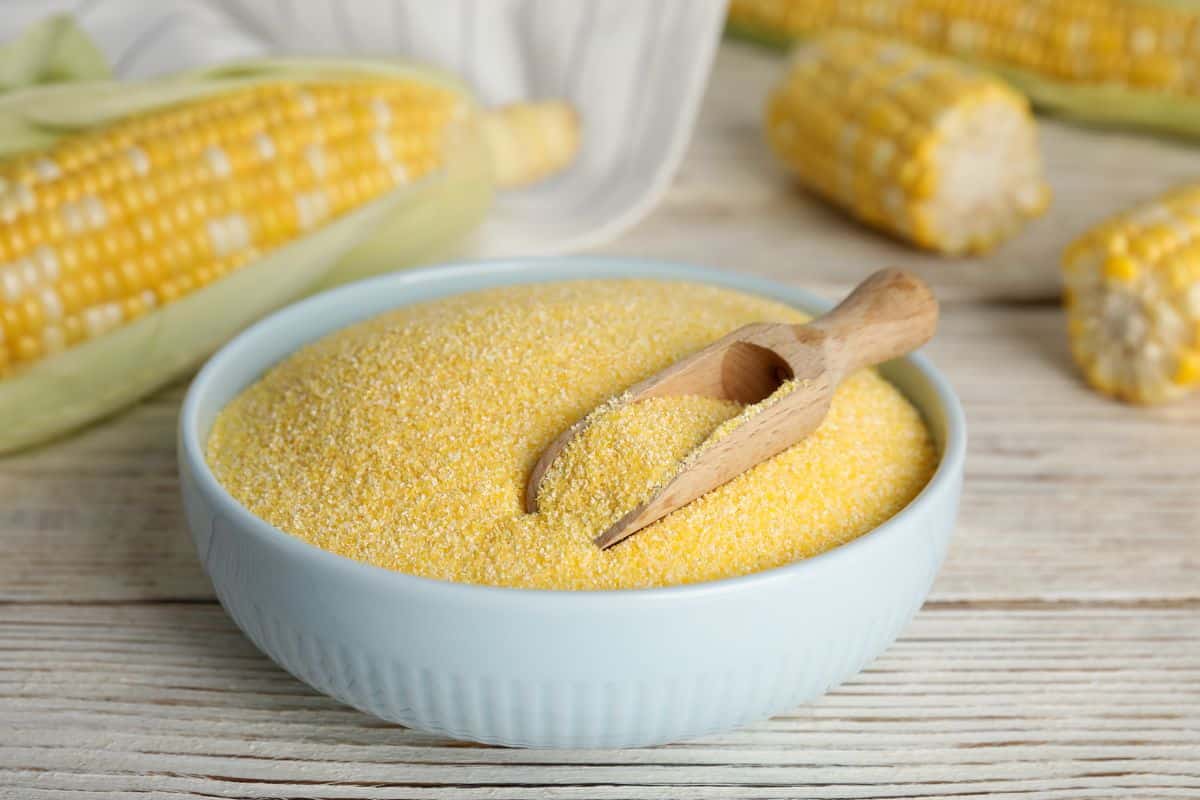
However, here are some things to remember when you make the swap:
- Ratio: The substitution ratio is typically not 1:1 due to the differences in texture and thickening power. You may need to use less cornmeal than the specified amount of cornflour.
- Preparation: Mix the cornmeal with a small amount of liquid from the recipe to create a slurry before adding it to the dish. This helps prevent lumps.
- Cooking Time: Cornmeal may require longer cooking times to soften and integrate into the dish, especially if used as a thickening agent.
For breading, corn flour batter will be thinner and crispier, while the cornmeal one will be thicker and crunchier. Use 1 cup of cornmeal for every 3/4 cup of corn flour.
To thicken sauces, start with a small amount, such as half the quantity of cornflour called for in the recipe, and gradually add more if needed. Keep in mind that cornmeal may not dissolve as smoothly as cornflour, so you may need to whisk or blend the sauce thoroughly to avoid lumps.
Tips for Choosing the Best Substitutes to Cornflour
Unsure which one to pick as an alternative to cornflour? Here are some tips to help you pick the best corn flour substitutes you can use for your dishes:
- If looking for strictly gluten-free flour types, go for cornstarch, rice flour, masa harina, tapioca flour and potato flour.
- For baking recipes, it’s best to stick to self-rising flour, wheat flour and all-purpose flour.
- Use corn starch, all-purpose flour, rice flour, masa harina, wheat flour, tapioca flour and potato flour as a corn flour substitute for thickening.
- For frying dishes, potato flour, cornstarch, cornmeal and self-rising flour are all solid choices.
FAQs
When storing corn flour, keep it in an airtight container to avoid exposure to air and humidity. This is to keep it fresh for as long as possible. Also, place in a cool, dry place away from heat or sunlight, which can quickly dry your corn flour.
Corn flour packages will come with expiration or best-by dates. As much as possible, use your corn flour before the date passes.
However, some say that corn flour is still good to use nine months up to a year after the printed date. However, you may want to err on the side of caution and use it while it’s still good.
The best way to tell is to smell it. Bad corn flour will smell off or musty as opposed to neutral. Some changes to its color or texture might also occur, which tells you that it’s time to buy a new pack or use corn flour alternatives.
Use the Best Corn Flour Substitute for Your Recipes
No corn flour in your pantry? No problem. Just use these alternatives to corn flour and save yourself the frustration.
However, remember that they’re not 100% the same as corn flour. Because of this, it’s best to be familiar with which one will work perfectly for your recipe.

